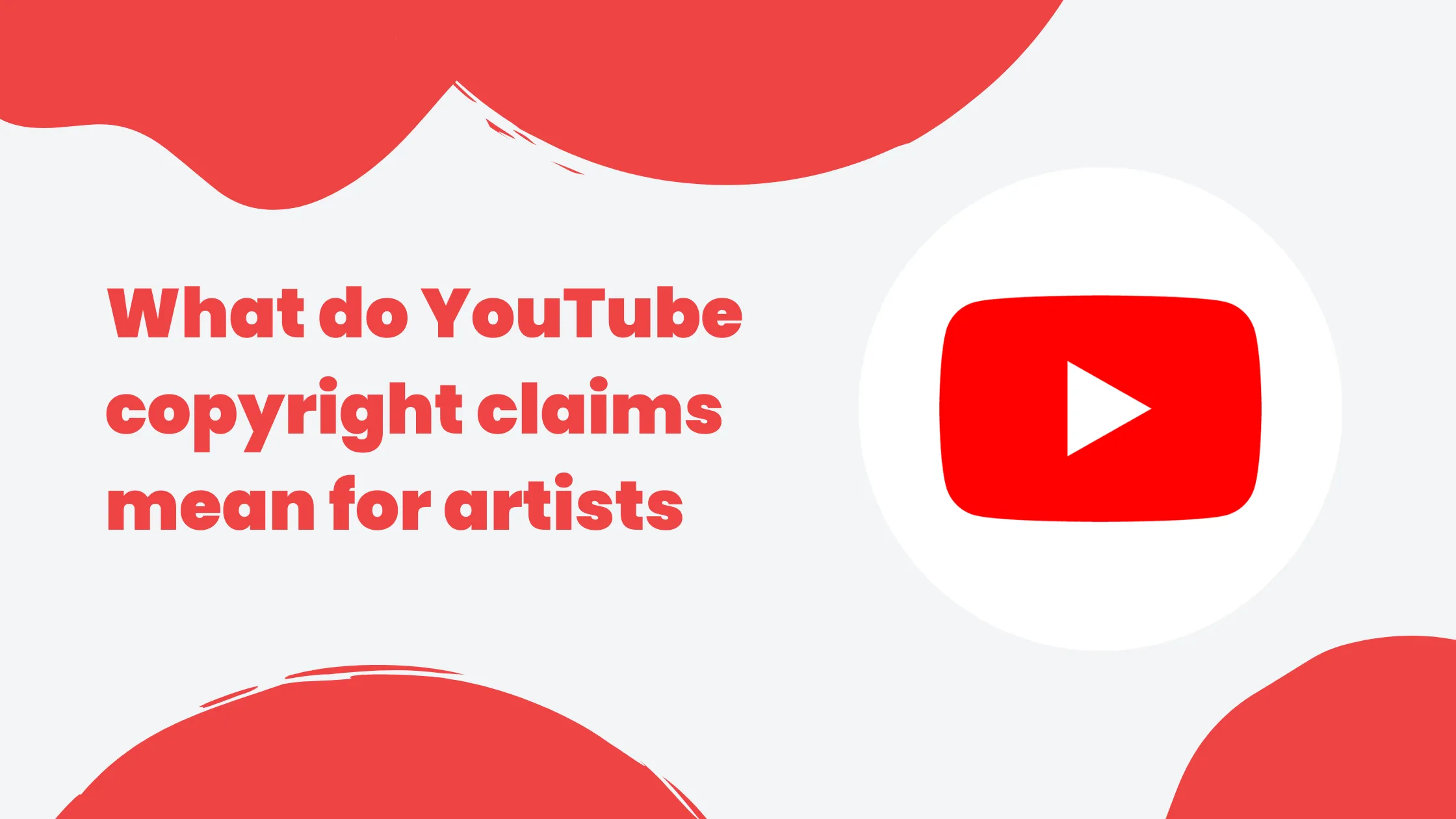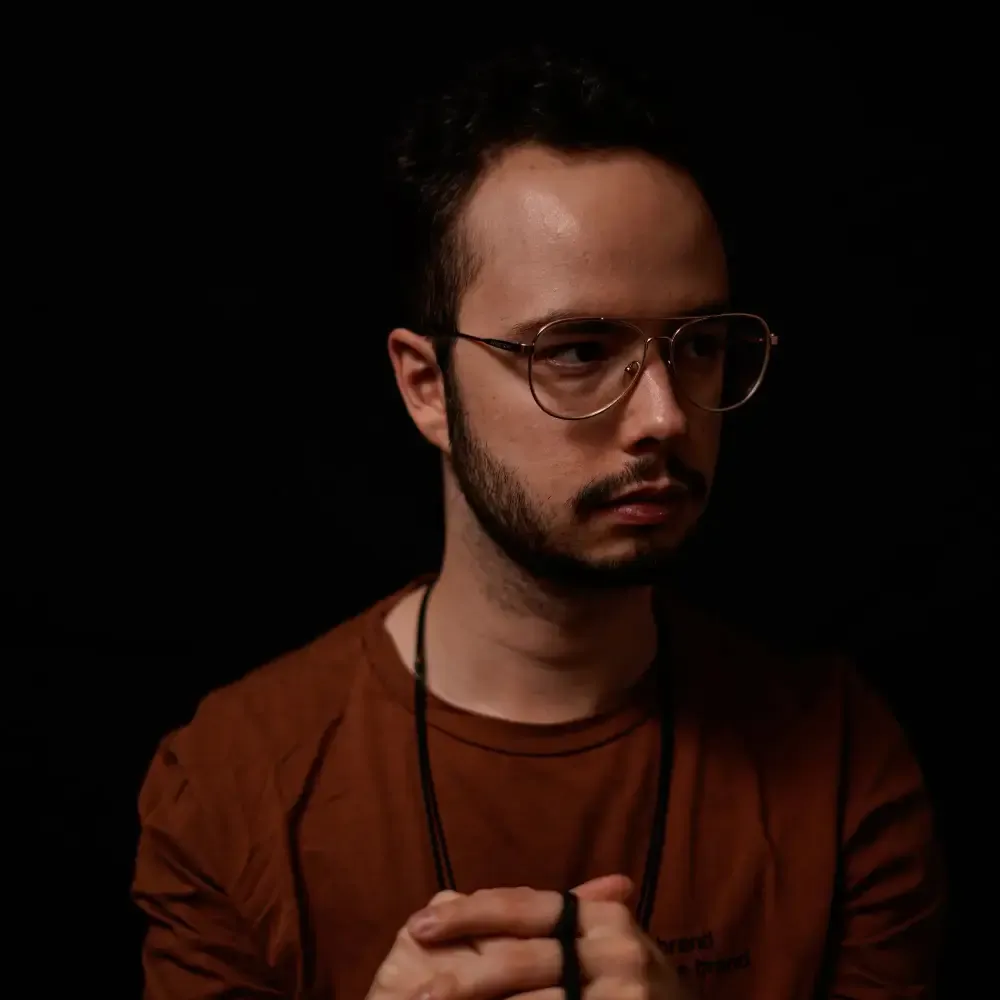
What do YouTube copyright claims mean for artists
03 May, 2024
As a burgeoning artist, it can be hard to get your work noticed and turned into exposed globally. YouTube can provide exposure in ways that physical stores and other media outlets cannot, giving widespread attention to any artist looking for a larger audience. However, it is important to be aware of the copyright laws and potential consequences of violating them. This article will provide an overview of YouTube's copyright policies, how to deal with copyright claims, and strategies for avoiding copyright issues when releasing music on YouTube.
Understanding YouTube's Copyright Policies
At a baseline, YouTube requires all users to respect copyright law when creating and uploading content. This applies to all forms of intellectual property, such as images, videos, music, and writing. Artists should familiarize themselves with YouTube's copyright policies before using the platform.
YouTube uses a system known as Content ID to quickly detect any copyright infringing material. Content ID can be used to identify any piece of media created by another person and block the user from using that content. If YouTube suspects that a user is using copyrighted material without permission (even unintentionally), it will issue a copyright claim on the user's behalf.
YouTube also offers a Copyright School course to help users understand copyright law and how to avoid copyright infringement. This course is available to all users and provides an in-depth look at copyright law and how it applies to YouTube. Additionally, YouTube provides a Copyright Tips page to help users understand the basics of copyright law and how to protect their own content.
Content ID and Copyright Claims Explained
Content ID is an automated system developed by YouTube to help detect music, video, and other types of content that has been illegally uploaded to the site. When a video is uploaded that contains an original piece of content, Content ID will attempt to match the video to existing content within its database. If a match is found, then the user will receive a warning that their content might infringe on another person's rights of authorship. Depending on the circumstances, YouTube may then remove the video, issue a copyright claim, or it may keep the video up and place advertisements around it.
When a YouTube copyright claim is issued, the user who uploaded the video will receive an email from YouTube with instructions on how to dispute the claim. Usually, this involves providing proof that the video does not infringe on any other person's rights of ownership or authorship. If the user is unable to provide sufficient proof, then the video will remain blocked or possibly be taken down.
It is important to note that YouTube's copyright claim system is not perfect and mistakes can be made. If you believe that a copyright claim has been issued in error, you can contact YouTube directly to dispute the claim. YouTube will then review the claim and make a decision on whether or not to remove the claim.
How to Deal with a YouTube Copyright Claim
If you receive a copyright claim from someone claiming ownership over your content, there are several things you can do to dispute it:
Submit Documents: Submit proof that you own the material you are using, such as contracts and licenses.
Submit Counter-Notifications: Submit counter-notifications if you believe that someone is wrongfully claiming ownership over your content.
Send Appeals: Send appeals to YouTube if you believe that the copyright claim against your content is in error.
It is important to remember that YouTube's copyright system is automated and can make mistakes. If you believe that you have received a copyright claim in error, it is important to take the necessary steps to dispute it. You can also contact YouTube directly to discuss the issue and provide additional evidence to support your case.
What to Do When Your Content is Claimed by a Third-Party
When a third party makes a claim on your content, you will need to provide them with evidence of the rights or permissions you have to use the content. You can provide this evidence by submitting documents such as licensing agreements or contracts that prove you are authorized to use the content in question. This can be done through YouTube's counter-notification process.
If you are unable to provide evidence of your rights or permissions, you may need to remove the content from your channel. If you believe the claim is invalid, you can dispute the claim and provide evidence to support your case. YouTube will review the evidence and make a decision on the validity of the claim. If the claim is found to be invalid, the content will be restored to your channel.
Releasing Music on YouTube and Protecting Your Rights
When releasing music on YouTube, it is important to protect your rights as an artist. This means obtaining the proper licensing and permissions before using someone else's material or uploading your own work to the platform. It is also important to register your music with YouTube's Content ID system so that your content is safeguarded against copyright infringement.
In addition to registering your music with YouTube's Content ID system, it is also important to make sure that you are properly credited for your work. This means including your name, artist name, and other relevant information in the video description. This will help ensure that you are properly credited for your work and that your rights are protected. Releese can help you monetize your music on YouTube using Distribution Cloud.
Potential Legal Consequences of Infringing on Copyrights
Infringing on someone else's copyright can have serious legal consequences, ranging from fines to potential jail time. Therefore, it is important for artists to learn about and abide by YouTube's copyright policies in order to avoid legal issues. This may mean obtaining proper licensing for samples or covering songs in their own unique way.
In addition to the legal consequences, copyright infringement can also have a negative impact on an artist's reputation. If an artist is found to be infringing on someone else's copyright, they may be seen as untrustworthy or unethical, which can damage their reputation and make it difficult to find future work.
Strategies for Avoiding YouTube Copyright Claims
There are several strategies that artists can use to avoid copyright issues on YouTube. This includes:
Obtaining Licensing or Permissions: Obtaining proper licensing or permissions from the copyright holder before using someone else's material.
Covering Songs Differently: Covering songs in your own unique way to differentiate them from existing material.
Registering with YouTube's Content ID: Registering all original music with YouTube's Content ID system, this can be done on Releese.
In addition to the strategies listed above, artists should also be aware of YouTube's Fair Use policy. This policy allows for the use of copyrighted material in certain circumstances, such as for educational or commentary purposes. It is important to understand the limitations of this policy and to ensure that any use of copyrighted material falls within the scope of Fair Use.
Tips for Handling YouTube Copyright Disputes
If you do find yourself in a dispute over a copyright issue on YouTube, there are several tips you should keep in mind:
- Be Honest: Be honest with all parties involved when presenting evidence of your rights or permissions.
- Be Polite: Be polite when dealing with YouTube moderators or other parties in the dispute.
- Research: Research both sides of the dispute and become familiar with relevant laws and regulations.
Pros and Cons of Releasing Music on YouTube
When considering releasing music on YouTube, it helps to weigh up the pros and cons. On one hand, YouTube offers massive exposure opportunities for any artist looking for a larger audience. On the other hand, there are potential risks associated with violating copyright laws which can leave artists vulnerable to legal action. Therefore, it is essential to become familiar with YouTube's copyright policies before using their platform.

Maxence has amassed over 50 million streams as an independent artist before working as a business development manager for an indie dance record label.